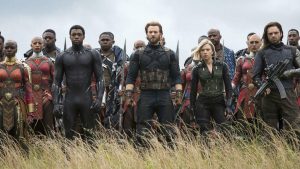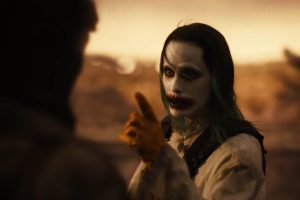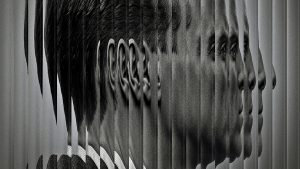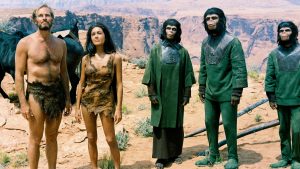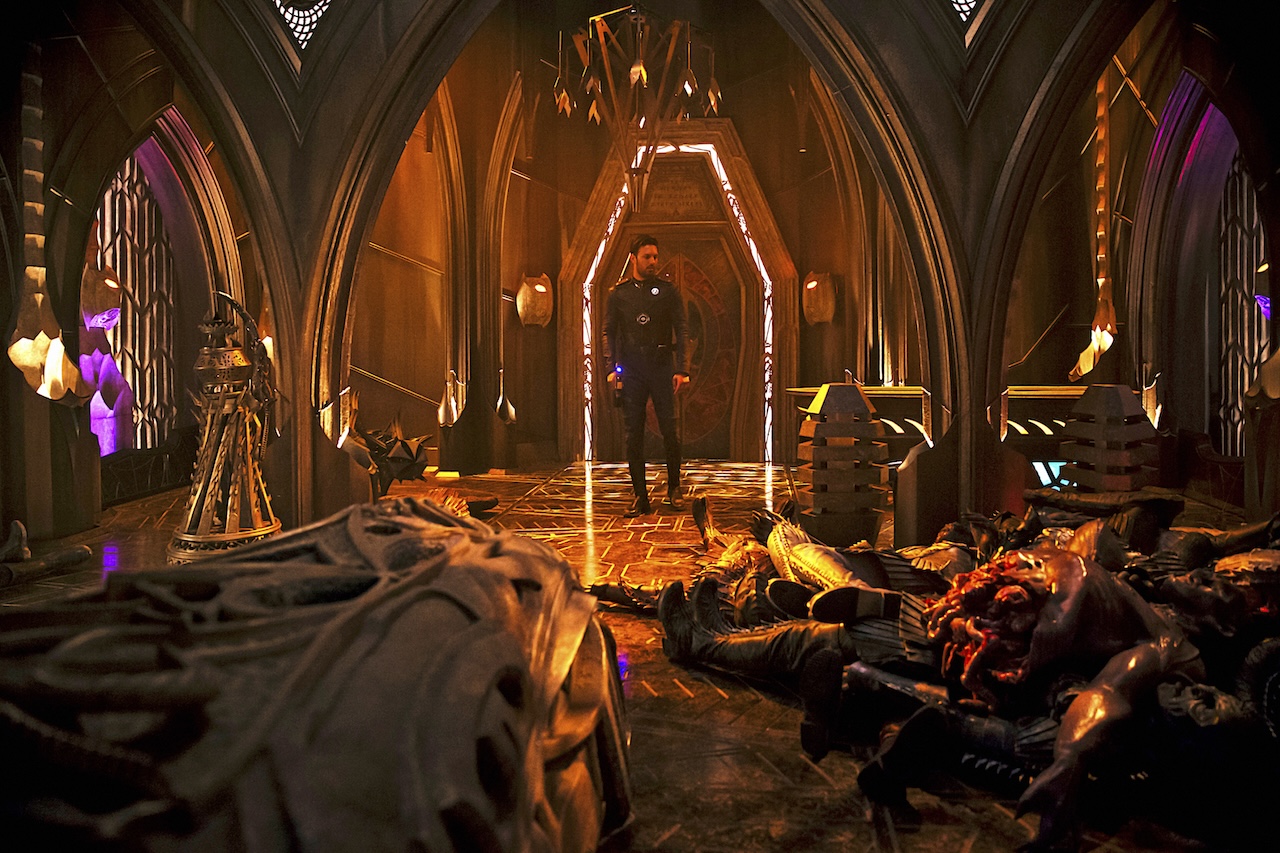
“The City on the Edge of Forever.” “The Best of Both Worlds.” “Far Beyond the Stars.”
Star Trek has produced many of the all-time greatest episodes of television, finding new ways to approach its central concept of spacefaring humans in an optimistic future. But Star Trek also consists of nearly 900 episodes across several series, spanning decades and formats. So there just have to be a few stinkers in there, right?
Boy, are there ever. Everyone has their personal pet peeves, but these terrible episodes of Star Trek, at best, mishandle tone and character or, at worst, undermine the franchise’s core values.
15. “Subspace Rhapsody” – Strange New Worlds
Let me be clear: Silly Trek is good Trek. There’s a reason you won’t find oft-lamented episodes such as “Spock’s Brain,” “Sub Rosa,” or even “Threshold” on this list. And Strange New Worlds deserves credit for boldly diving into the goofier side of Star Trek, whether it’s the fairy-tale masterpiece “The Elysian Kingdom” or any of Spock’s shenanigans.
No, the problem with “Subspace Rhapsody” isn’t the fact that it’s a musical. It’s that the music is bad. Written by Kay Hanley and Tom Polce (apologies to Letters to Cleo superfan Ben Wyatt), the songs in “Subspace Rhapsody” all have the same inspirational, “bigger is better” tone of The Greatest Showman or Dear Evan Hansen. There’s no nuance to the feelings being expressed, no revelations that didn’t already happen through gestures and dialogue in earlier episodes. Sure, Celia Rose Gooding makes Uhura’s songs compelling, but they’re a Tony-nominated Broadway performer. The rest of the cast can’t do much with the bland material.
14. “Silent Enemy” – Enterprise
Malcolm Reed likes pineapple. That’s the big revelation of “Silent Enemy,” a season one episode of Enterprise. Sure, the episode is really about the NX-01 getting phase cannons, but the B-plot follows Hoshi as she tries to learn something about Malcolm for his birthday. And she discovers that he likes pineapple.
Honestly, “Silent Enemy” isn’t that much better or worse than any other episode of Enterprise‘s first season. But it’s the one that highlights what an absolute nothing Reed ended up being. When he’s not whining about his family disrespecting him or arguing with Archer, Reed is an irritating blank. “Silent Enemy” and its lame attempt to make Reed into a character underscores just how much the show botched any crew member who isn’t Tucker, Phlox, or T’Pol.
13. “The Outrageous Okona” – The Next Generation
Like “Silent Enemy,” the A-plot in “The Outrageous Okana” is pretty fun, in which the crew must deal with a rogue called Okona (Billy Campbell). The problem is with the B-plot, in which Data tries to learn about humor. Data’s quest to understand humanity is, of course, an important thread in TNG. But “The Outrageous Okona” gets it wrong, as Data gets help in his quest by conjuring a comedian in the holodeck… a comedian played by Joe Piscopo.
It’s hard to imagine a worse choice to play a 20th century comedian who teaches an android about the meaning of humor. Even if Piscopo isn’t playing himself, and even if Piscopo is still just off a strong Saturday Night Live run, not yet the fully irritating talk radio figure he’s become, he’s not anyone’s idea of a great stand-up. At best, the comedy plot explains why Data is so annoying when he turns on his emotion chip in Generations.
12. “The Child” – The Next Generation
Honestly, this entire list could be made up of TNG episodes, especially from the first two seasons. TNG stumbled in its first two seasons because of Gene Roddenberry’s then-retrograde ideas and because of a writer’s strike. Both of those problems plague “The Child,” the season two premiere. The 1988 writer’s strike forced producers to pull a script originally written by Jaron Summers and Jon Povill for Star Trek Phase II, which did feature early versions of Troi and Riker in the form of The Motion Picture‘s Ilia and Decker, but had very different mores.
In the version of “The Child” that made it to TNG, which has an added writing credit for Maurice Hurley, an alien entity impregnates Troi in her sleep. The child rapidly comes to term, matures, and soon dies, becoming energy once again. Turns out that the whole thing was an experiment by the entity to learn about humanity, which the show treats as a fine, normal thing, not a violation of Troi. At least the episode introduced Guinan, one of the show’s best characters.
11. “The Way to Eden” – The Original Series
Even those with a high tolerance for silly Trek have a hard time with “The Way to Eden” aka “the one with Space Hippies.” Led by famed scientist Dr. Sevrin (Skip Homeier) and (ahem) “musician” Adam (all-time “that guy” Charles Napier), the group hijacks the Enterprise in hopes of going to Eden, a mythical utopia.
If one squints, it’s almost possible to see value in “The Way to Eden” as a critique of the 60s culture that made The Original Series so popular. But that’s being generous. All of the dialogue feels like an old person complaining about kids these days, and Adam might be the most irritating character in Trek history, and yes I know season one Neelix exists. It’s no wonder the great D.C. Fontana took her name off the script, using the pen name “Michael Richards” for the writing credit, alongside Arthur Heinemann.
10. “The Fight” – Voyager
Up until getting redeemed in the second season of Prodigy, Chakotay was one of the worst characters in Trek history. Part of the blame does belong to actor Robert Beltran, who turned in increasingly disinterested performances as the Voyager writers stopped caring about Chakotay, but most belongs to the producers, who hired scam artist Jamake Highwater to help shape the character. Highwater presented himself as a member of the Cherokee Nation and consulted on the show’s depiction of Native American culture. But because he was a liar and the producers didn’t care that much, his recommendations resulted in clanging stereotypes.
“The Fight” offers one of the worst examples of the show’s mishandling of Chakotay. While on a vision quest (we’re in trouble already) to make sense of the hallucinations he’s been having, Chakotay imagines himself in a boxing match against a strange alien. The idea of an alien making contact through unconventional means generally works, but “The Fight” gets battered by its embrace of stereotypes and cheap visualization of the central match.
9. “Project Daedalus” – Discovery
Some reading this might argue that the entire list should be Discovery episodes, and season two’s “Project Daedalus” illustrates why. Discovery largely eschewed the ensemble model used by most Trek series, limiting the bridge crew to occasional reaction shots and making every plot about protagonist Michael Burnham. Furthermore, the show leaned into the characters’ emotional lives, making it the most weepy Trek series by far. Different isn’t necessarily bad, and as the first new Trek series in 12 years (a show co-created by the iconoclastic Bryan Fuller to boot), Discovery needed to take some big swings.
However, “Project Daedalus” proved that the producers had no idea how to handle that balance, at least not in its rocky first two seasons. Up until this episode, Airiam (first played by Sara Mitich and then by Hannah Cheesman) was just the Cyborg Lady on the Bridge. “Project Daedalus” ends with Airiam sacrificing herself for the ship, and because Discovery wants to illicit a big, tearful goodbye, it has to do a ton of character work in this one episode. As much as Burnham actor Sonequa Martin-Green and her co-star Mary Wiseman (Tilly) try to sell their sorrow and gratitude at Airiam’s actions, “Project Daedalus” feels cynical in its attempt to wring pathos from a nothing character.
8. “Farewell” – Picard
On an intellectual level, most can appreciate Patrick Stewart’s reluctance to turn Picard into a nostalgic revival series. It’s good that he wanted to push the character forward. But Picard pushes the beloved Captain forward into a trash heap of confusing storylines, unending misery, and bland characters. All of those problems come to a head in “Farewell,” the final episode of the second season, before showrunner Terry Matalas came on to make Picard‘s third season a TNG reunion and, more importantly, good.
Season two of Picard begins with Q sending Picard first to a dystopian present and then to the past (our present). There, Picard meets a younger Guinan, yet another Soong (played again by Brent Spiner), and also Dr. Jutari becomes the new Borg Queen. “Farewell” tries to mush all those plots together, resulting in a blob of empty signifiers, which somehow ends with Picard hugging Q, the Jutari/Queen erasing the threat of the Borg, and Wesley Crusher recruiting Soong’s daughter Kori to the Travelers. Like a kid using all of his crayons at once, the mix of plots and tones in “Farewell” creates nothing but a brown smear.
7. “Let He Who is Without Sin” – Deep Space Nine
Worf is one of Star Trek‘s best characters and Deep Space Nine is the best Trek series. But the two didn’t always mix well together. Freed from a security officer’s position, Worf didn’t have to get beat up to prove an alien enemy’s toughness, like he did on TNG. But he did become a grouchy, selfish prude, especially in “Let He Who is Without Sin.”
Written by old hands Ira Steven Behr and Robert Hewitt Wolfe and directed by none other than Odo himself René Auberjonois, “Let He Who is Without Sin” follows couple Worf and Jadzia to the pleasure planet Risa. Uncomfortable with the planet’s freewheeling ways and unable to browbeat Jadzia into submission, Worf joins a group of puritanical reformers on Risa and ultimately sabotages the planet’s weather control system. The episode asks viewers to see Worf’s actions as a result of his inability to be vulnerable in his insecurities, but he just comes off as a judgy jerk.
6. “These Are the Voyages…” – Enterprise
No, the infamous TNG season two finale “Shades of Grey” will not make this list. Instead, “These Are the Voyages…” takes its place as the worst finale in Trek history, in which Riker uses technology to watch a clip show on the grounds that it reduces major plot points to quick clips and the fact that it’s a series finale.
Where the three series that preceded Enterprise got a few mulligan seasons to figure things out, “These Are the Voyages…” puts a close on the series four-season run, just as it started to get good. Worse, it’s presented as a holodeck program that Riker runs aboard the Enterprise-D. Exceedingly worse, it essentially kills Enterprise‘s best character Tripp Tucker off-screen, an ignoble death for the one guy who popped throughout all four seasons. Even a series as little-loved as Enterprise deserved a better end.
5. “Plato’s Stepchildren” – The Original Series
Yes, “Plato’s Stepchildren” has one of the first interracial kisses in television history, when Kirk and Uhura share lock lips. Like many of TOS‘s progressive bona fides, though, the actual execution is less glorious than the legend suggests. Another entry in TOS‘s infamously bad third season, “Plato’s Stepchildren” was the sole Star Trek credit for longtime TV writer Meyer Dolinsky and was directed by David Alexander.
The episode pits the Enterprise crew against powerful telekinetics who model themselves after Ancient Greece and a very Philosophy 101 reading of Plato. Throughout the episode, the Platonians use their powers to force the crew to do their bidding. Most of the episode consists of Kirk and co. getting tortured, and even the much-vaunted kiss is non-consensual from both partners. Nichelle Nichols and William Shatner both recall the episode with pride, but it’s a tough, unpleasant watch.
4. “Profit and Lace” – Deep Space Nine
Deep Space Nine somehow transformed the Ferengi from an irritating batch of uncomfortable racial stereotypes to rich, lovable characters. That said, the show sometimes stumbled when it made the Ferengi the focus of an episode, as in the season six stinker “Profit and Lace,” written by Behr and Hans Beimler and directed by Alexander Siddig (why do the cast members get the worst eps to direct?).
“Profit and Lace” continues the ongoing plot about rights for female Ferengi, and does so by transforming Quark into a woman. Although the story stays on the right side of history as far as women’s rights go, it does so with more “isn’t crossdressing funny!” jokes than an average Monty Python sketch… but with far fewer laughs. Given the way DS9‘s Jadzia plot lines spoke to the trans experience more than most ’90s shows, its disappointing to see “Profit and Lace” miss the boat so badly.
3. “Into the Forest I Go” – Discovery
Ash Tyler gets sexually assaulted by a Klingon. Originally, “Into the Forest I Go” ranked lower on the list, but the very act of writing the aforementioned sentence bumped the episode up to number three. The penultimate episode of Discovery‘s bold but dissatisfying first season, “Into the Forest I Go” features an image common to some corners of Trek fandom but never before seen in an official release: a naked Klingon woman mounting a human male. Even though the scene is later revealed to be consensual (and we’ve known that Klingon’s have a rough idea of sex since TNG‘s first season), it’s first presented as an assault.
A bunch of other stuff happens in “Into the Forest I Go,” written by Bo Yeon Kim & Erika Lippoldt and directed by Chris Byrne, including the revelation of Lorca’s plan to use Discovery‘s spore drive and return to the Mirror Universe. But nothing can distract from explicit Klingon rape, the apotheosis of modern Trek‘s unfortunate tendency to confuse shocking moments for challenging storytelling.
2. “Retrospect” – Voyager
The Voyager season four episode “Retrospect” wants to be another story in which Seven of Nine recovers an aspect of her lost humanity, learning the hard way about imperfect memories. Directed by Jesús Salvador Treviño and written by Bryan Fuller and Lisa Klink, from a story by Andrew Shepard Price and Mark Gaberman, “Retrospect” follows an investigation into an arms dealer whom Seven charges with incapacitating her and taking some of her Borg implants. Although the Doctor immediately believes Seven, Tuvok and others find insufficient evidence.
The episode never comes to a definitive conclusion about Seven’s story, but it does have a firm end for the accused man. He blows himself up while running from what he insists is false arrest. As a result, “Retrospect” manages to say little about human memory and a lot about the plight of people accused of sexual assault. Given the accusations made against Trek producer Rick Berman, most notably by DS9‘s Terry Farrell (as recorded in the book The Fifty-Year Mission: The Next 25 Years), “Retrospect” feels retrograde.
1. “Code of Honor” – The Next Generation
Of course it’s “Code of Honor.” It has to be “Code of Honor.” None of TNG‘s first season episodes are particularly great, but only “Code of Honor” embarrasses the cast and crew to this day. According to behind the scenes reports, the episode began as a story about an alien race whose ancient Samurai-style honor codes resulted in Yar (the security officer originally modeled on Vasquez from Aliens, for those who forget) being forced into marriage by a warlord.
To be clear, that wouldn’t have been great, but it’s much easier to swallow than what we got. In the finished episode, with directing credits for Russ Mayberry and Les Landau and writing credits for Katharyn Powers and Michael Baron, the aliens are recreated into broad African stereotypes, who kidnap the blonde white woman Yar as part of a power play. Racist, sexist, and altogether dumb, “Code of Honor” mocks the tolerance and understanding that makes Star Trek so great.
The post The Worst Star Trek Episodes Ever, Ranked appeared first on Den of Geek.

